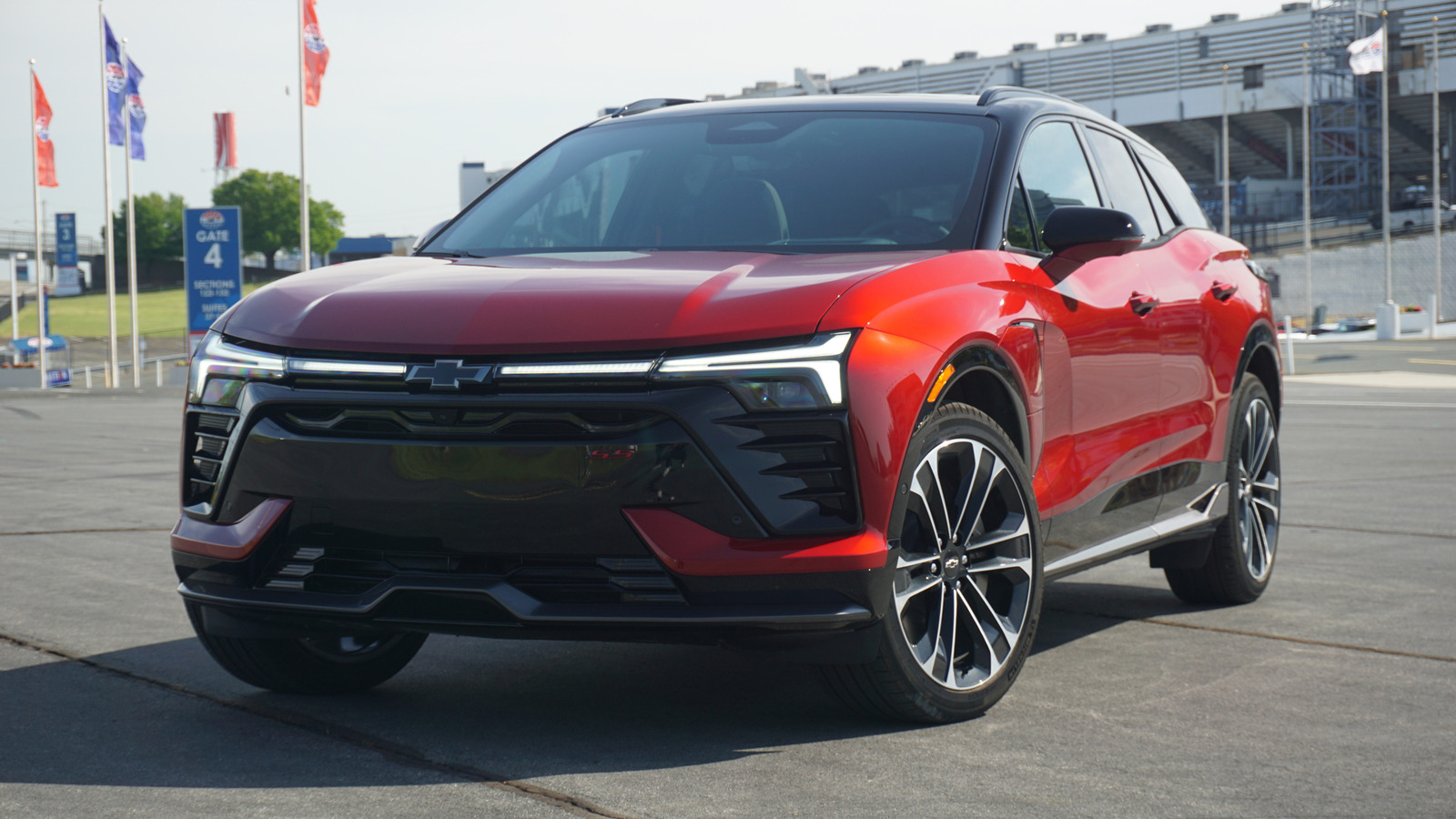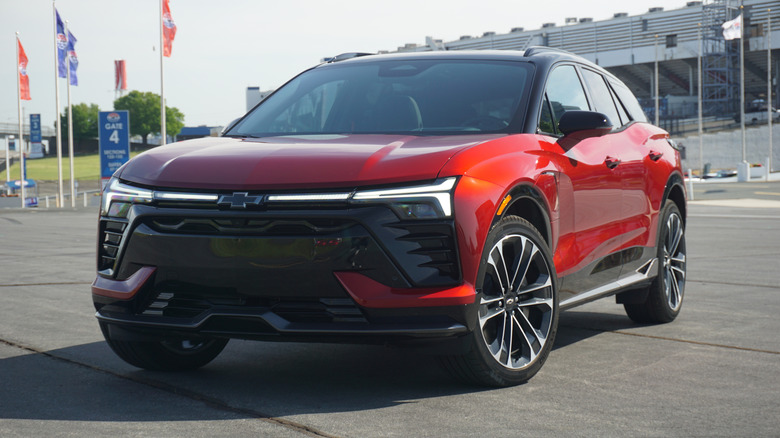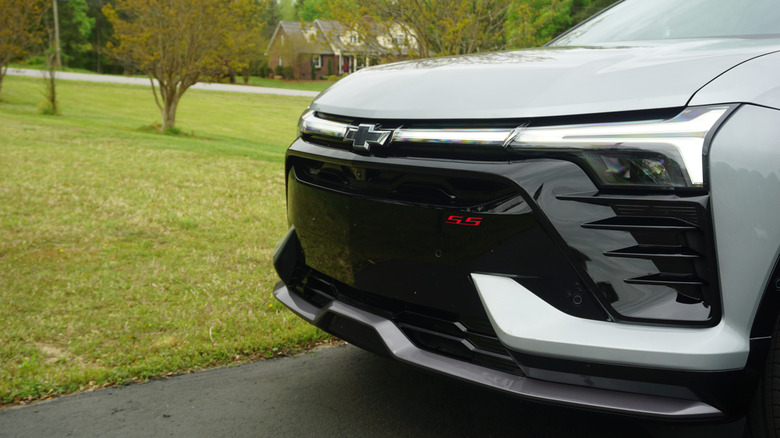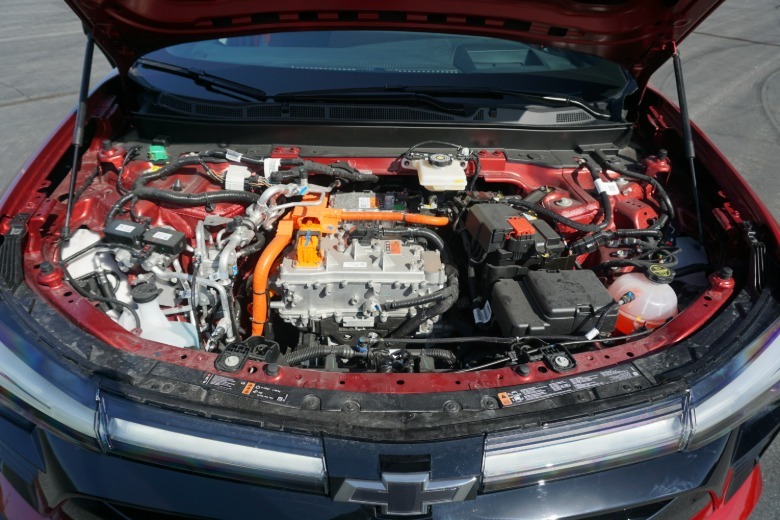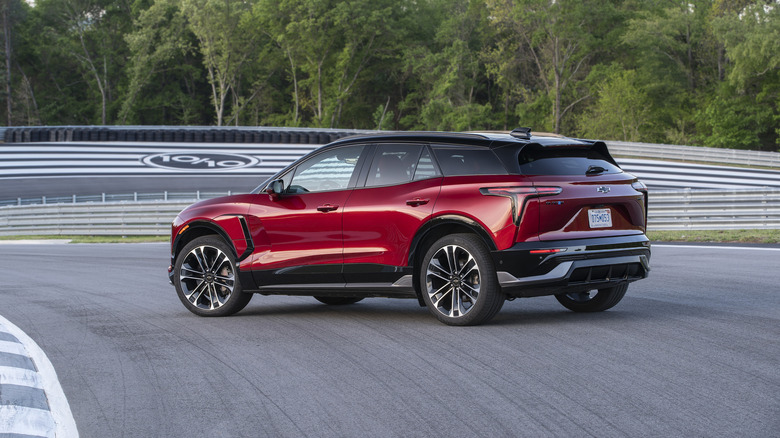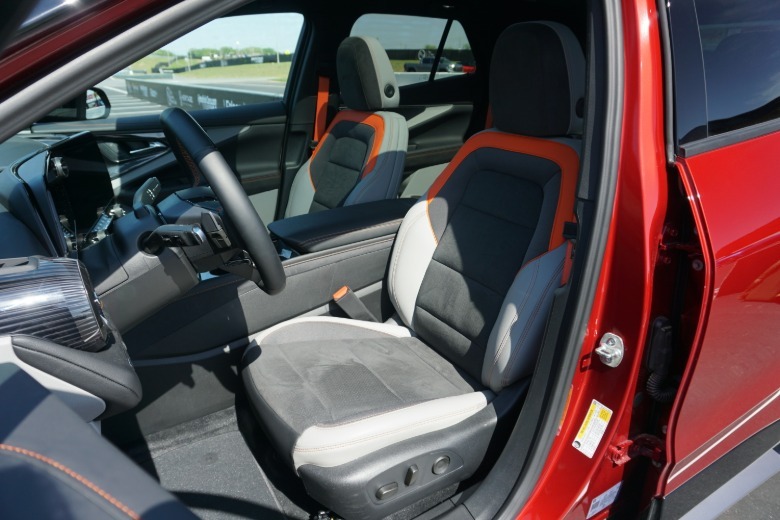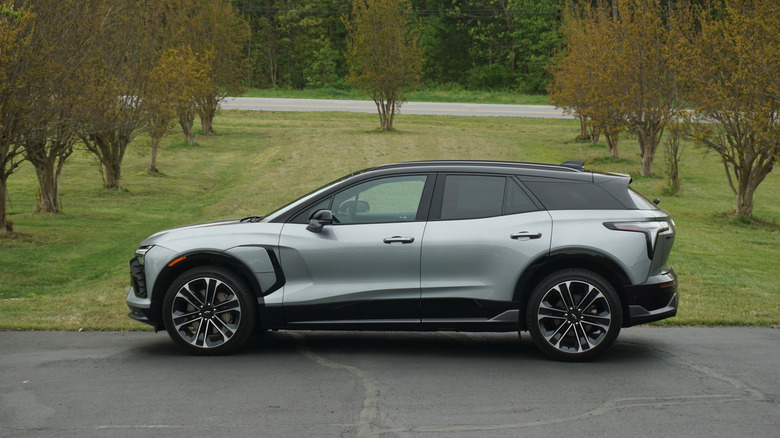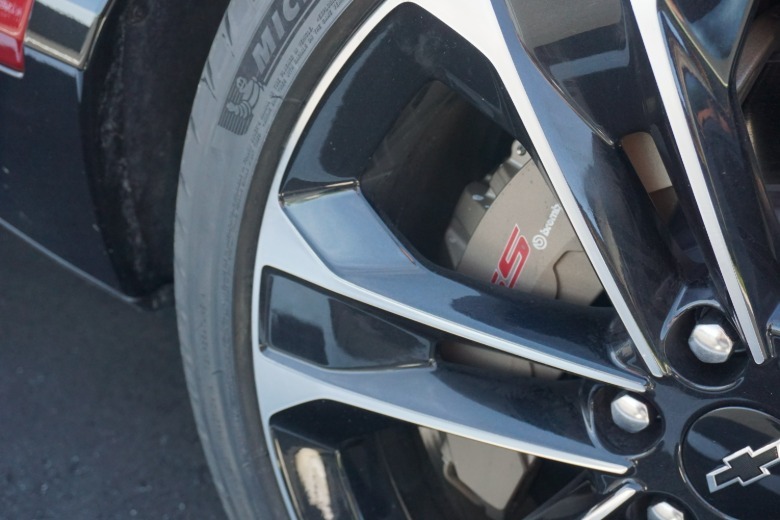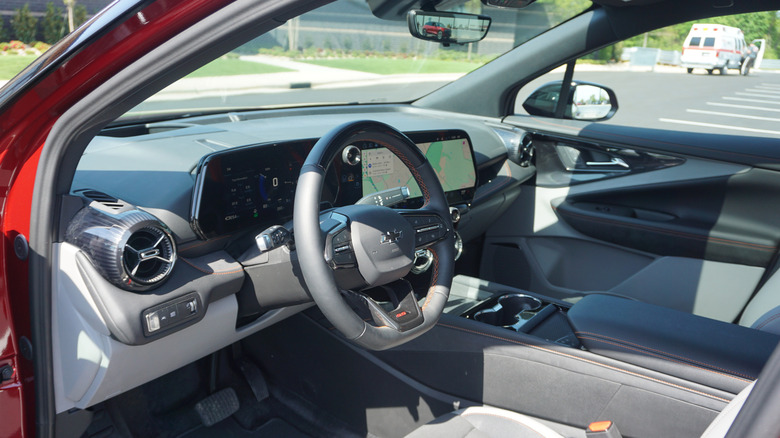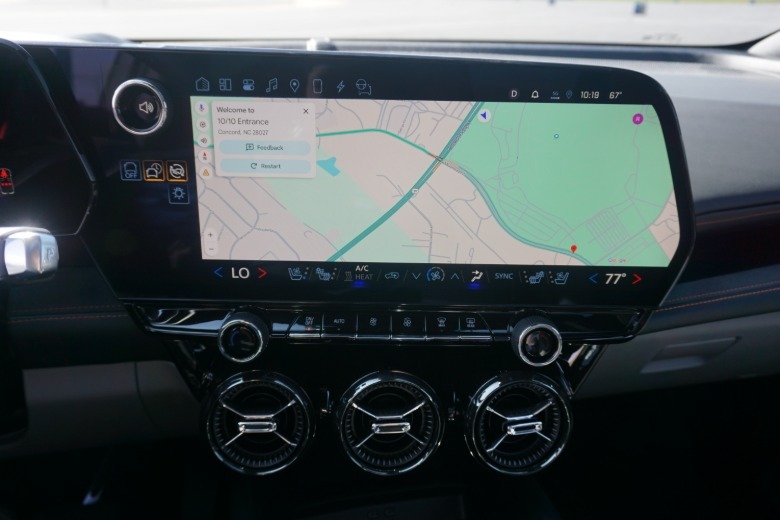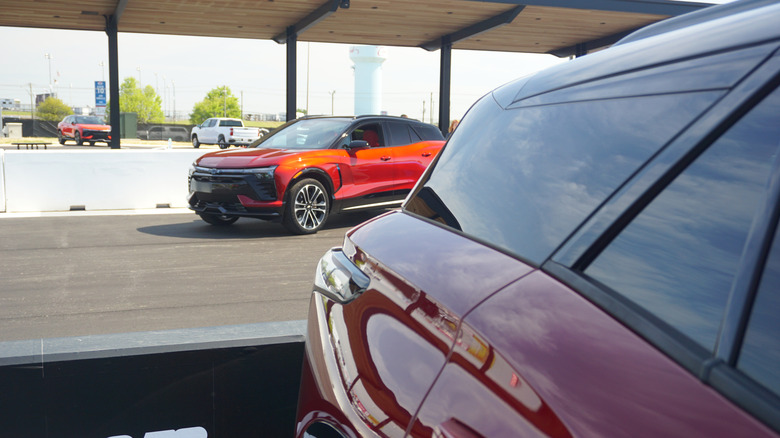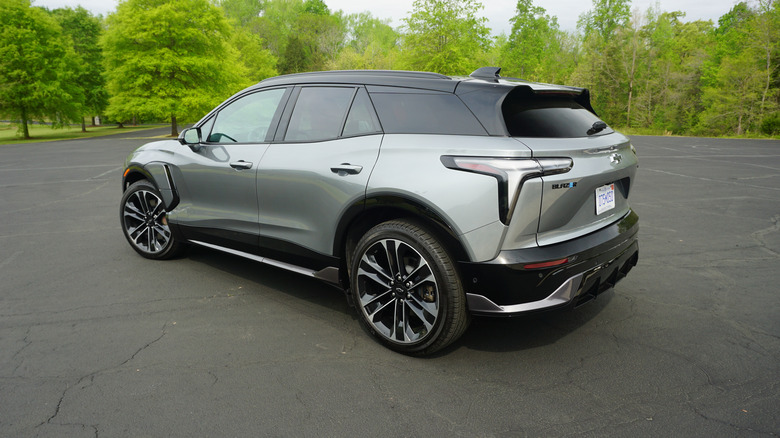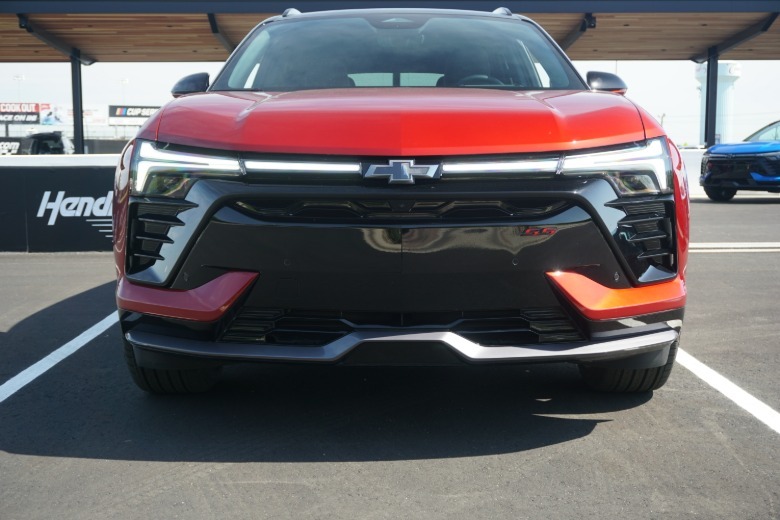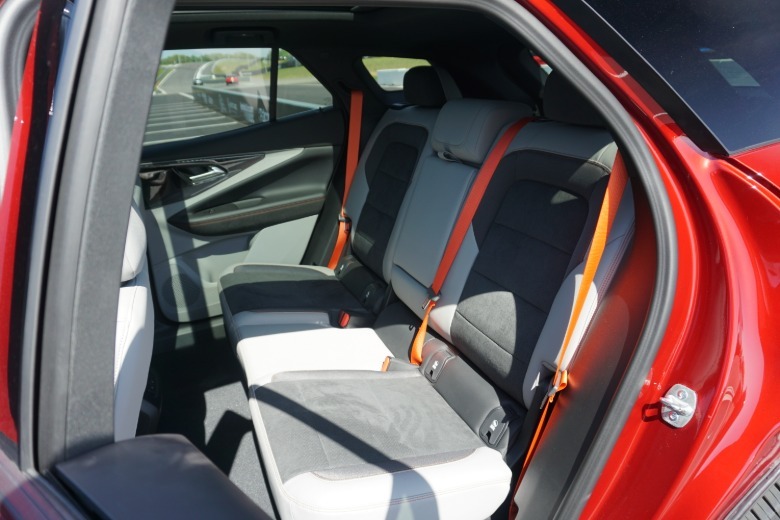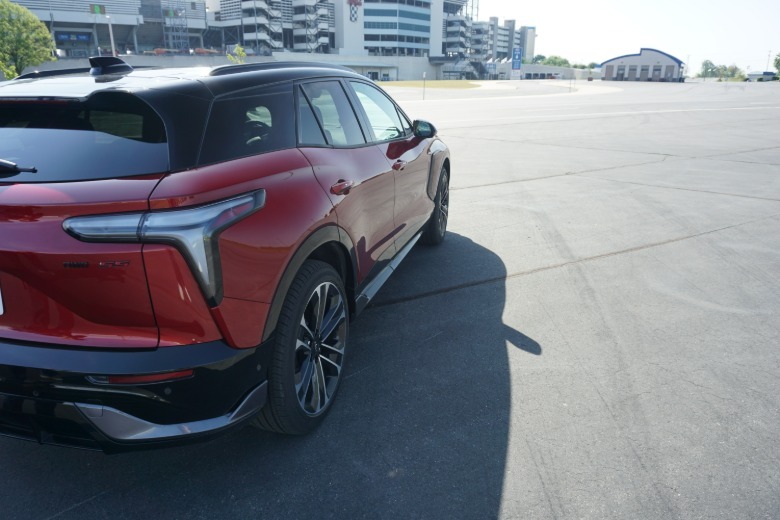It took a hell of a long time for Chevy to get the 2025 Blazer EV SS out the door. I’m sure you remember all of the teething issues the regular Blazer EV dealt with when it first went on sale, and that just pushed production further and further back. I mean, the Blazer EV SS was the hero car in “Barbie” — a movie that premiered nearly two years ago — and it’s now just starting to roll off the assembly line.
You know what? That’s okay, because the Blazer EV SS we’ve ended up with is certainly better for the extra time taken to develop it. What Chevy has done here is make a cohesive mid-size crossover EV that just so happens to be the cheapest way to get over 600 horsepower in a new car. It’s not a track star by any means, but it’s got more than enough room and power to rocket your whole family from 0 to 60 quicker than you can finish this sentence.
Full Disclosure: Chevy flew me down to Charlotte, North Carolina, fed me and put me up in a hotel all so I could drive the 2025 Blazer EV SS
Creating the Blazer EV SS
The real difference maker between the Blazer EV SS and the regular Blazer EV is its powertrain. Here, you’ll find front- and rear-mounted permanent magnetic drive motors, pulling power from a sizable 102-kWh battery pack with bi-directional charging. The system puts out a more-than-adequate 615 horsepower and 650 pound-feet of torque. That’s enough to rocket this 5,730-pound family crossover from 0 to 60 mph in just 3.4 seconds in WOW (Wide Open Watts) mode. For those keeping score at home, it’s the quickest SS model Chevy has ever produced, and it feels every bit as rapid in a straight line as the numbers would suggest.
When you deplete the 303-mile EPA-estimated range, changing it back up isn’t too much of a problem. Chevy says the Blazer EV SS can charge at up to 190 kW on a DC fast charger. The company doesn’t quote 10-80% charging times but does say you can add up to 79 miles of range in just 10 minutes on one of those chargers. That’s not exactly industry-leading, but it’ll surely get the job done for most folks.
The powertrain isn’t the only difference between the EV SS and the regular Blazer EV. Engineers also stiffed up the car’s anti-roll bars and springs by 60% and 30%, respectively. Despite this, it never feels uncomfortable on the road. Chevy also tells me it gave the Blazer EV SS a faster steering ratio, but I could have done with an even quicker rack.
Among other performance things the Blazer EV SS gets as standard are Brembo front brakes with 15.3-inch discs and six-piston calipers, meatier 275/40R22 tires (summer tires are available through a performance package that’ll set you back $395), and a 0.2-inch ride height drop. You also get exclusive 22-inch wheels, a different front and rear bumper treatment, new side sills and some fun interior color and texture options. The Bowtie even offers some really fun colors, like Habanero Orange, Riptide Blue and Radiant Red Tintcoat, as well as some boring colors like Black, Sterling Gray Metallic and Iridescent Pearl Tricoat. Chevy is clearly trying to give EV SS owners more than just a powerful drivetrain with this package.
Not a track monster
Those efforts mostly show through from behind the wheel. I was given the opportunity to drive the Blazer EV SS both on track and on the open road, and it does far better in one place than the other. To be fair, Chevy knows this. Before taking it out on track at the newly built Ten Tenths Motor Club in Concord, North Carolina, the PR folks told me that this car is not a track monster. In their words, it’s more geared toward being a “canyon carving daily driver,” and after driving over 100 miles in this car in different scenarios, I’d say they’re mostly right.
In a straight line, the car is great. It’s got all of the neck-snapping acceleration in WOW mode that you’d expect from an electric car with over 600 horsepower, and I was able to beat or match Chevy’s claimed 0-to-60 time on every single run I took. The issues really only begin when you want to go left or right, something the Blazer EV SS would rather you didn’t do. Because GM’s engineers aren’t all-out lunatics, the EV SS is set up to push through a corner — it’s nearly impossible to get oversteer of any kind, and I assume that’s done so people don’t drive into guardrails or other cars at too alarming of a rate. The other cornering issue lies in the fact the front seats are very flat. I have a beautiful, juicy ass and wide hips, yet I constantly found myself having to either keep a tighter grip on the steering wheel or brace my knees on the door and center console just to stay planted. The seats are much better suited for cruising down a highway or running errands around town.
At the very least, the optional summer tires let you know well in advance that they’re about to give way and start skidding. Once you get that understeer under control, your best move is to set the wheel, plant your right foot and hang on. You’ll rocket out of the corner far faster than you were ever expecting to.
Getting off track
Things get much better when you remove the Blazer EV SS from a track and take it out on the open road. Here, everything makes a lot more sense — the wide seats, the slow steering ratio, all of the drive modes, and the high-quality Level 2 driver-assist system all come into focus.
I found the Blazer EV SS to be best suited for an open backroad with long sweepers, where you can really feel the excellent grip and stability given to you by the car’s tires and suspension. It also gives you far more chances to use its party trick, those 615 horsepower that are available at an instant. Chevy did a really good job of making that power progressive, too. It comes on extremely smoothly — you don’t really get any sort of head-snapping sensation unless you matt it from a dead stop. It’s really impressive motor control.
This car is also going to be a really good long-distance cruiser, as long as the infrastructure holds up. It’s tremendously good at isolating you from the world outside when you’re in Normal mode. All of the fake engine noise goes away and you’re left with a very low noise floor thanks to sound deadening that keeps both road and wind noise out of the cabin. From there, you activate the standard Super Cruise and let this thing just glide you down the highway. As it is in every other GM product it’s included in, Super Cruise is pretty much second to none when it comes to L2 ADAS systems.
No matter the situation, there are several drive modes to choose from including Normal, Sport, Snow/Ice and Z-Mode, a custom mode that lets you tailor the car how you want it. You can also choose the level of regenerative braking you want, from completely off to full one-pedal driving. Like on the Bolt EV, Chevy provides drivers with a small, crappy-feeling plastic paddle on the left side of the steering wheel that’ll let you engage regen braking whenever you want.
Too driver-focused inside for its own good
The interior of the Blazer EV SS is par for the course if you’ve been in any other current GM products. It’s a real mixed bag of materials — in some places there are genuinely thoughtful and nice uses of leather, suede and metal, but there’s also far too much hard plastic in common touchpoints or a vehicle that costs this much money,like on the lower door cards and gear tunnel and cup holder area. There’s also some less-than-nice feeling switchgear like the window switches (the Blazer only has an automatic driver’s window) and the two stalks behind the steering wheel. I guess I can understand how this happened. I mean, you’re not going to build the cheapest 600-hp car in America without cutting money somewhere.
Still, the overall design of the interior is at least somewhat interesting, although its driver-centric cockpit shape presents some problems. It’s extremely similar to what is found in the standard Blazer EV with its 11-inch digital gauge cluster, 17.7-inch infotainment display (which doesn’t have Apple CarPlay or Android Auto) and massive air vents. The volume button is also quite far away from you if you’re the passenger. In reality, the entire center display is tilted too far toward the driver to be super useful for the passenger. This is fine on an all-out performance car, but it’s annoying as hell in a family crossover.
You do get a wireless charging pad as standard, a plethora of cup holders and enough seating room for five full-sized adults. I had more than enough room behind my driving position in the second row to fit comfortably. The trunk is also plenty big, which is a good thing since there’s no frunk in the Blazer EV SS. Plus, there is some added flare by way of two interior color packages: Black/Medium Ash Gray, which also gives you some very cool orange accents, or Adrenaline Red, which is somehow even brighter than you imagine. At least the interior felt relatively well screwed together, which is a real big deal when you take a look back at what early Blazer EVs were like.
A relative deal
When you go to buy a Chevy Blazer EV SS, there aren’t a ton of options to choose from. The crossover starts at $62,095, including destination. Aside from a couple of paint colors that run between $495 and $995, you can select a few charging accessories, $2,950 black wheels (which you should skip), the $395 Performance Package (which gives you summer tires, different brake linings and non-FNC brake rotors), different floormats and a $1,495 panoramic sunroof. Even with a bunch of accessories added, it’s hard to get a Blazer EV SS to the $70k mark.
No matter how you slice it, that’s the cheapest way to get a brand-new vehicle with over 600 horsepower, if that’s the sort of thing you’re into. The pricing is in line with some of its competition like the Ford Mustang Mach-E GT ($55,185), which is down on power and slower to 60 mph, and the Hyundai Ioniq 5 N ($67,675), which is quicker and more powerful than the Blazer, but only just.
Good enough to warrant your attention
There was a part of me that thinks the Blazer EV SS actually making it to production is a triumph on its own. This car is so overdue (it was first revealed in the summer of 2022!), and earlier Blazer EVs were plagued with such issues, I wasn’t sure it would ever actually see the light of day. I really thought the only times we’d ever see one would be when rewatching “Barbie,” but here we are two years later.
The Blazer EV SS is real, and the automotive landscape is better for it. Not only is it quick and comfortable, it’s also pretty damn good-looking and has plenty of usable space for a growing family. Sure, it’s not a track star, but it doesn’t need to be. It’s good enough to warrant the attention of people who want an electric crossover but also want a bit of fun and excitement in their lives.
On top of all that, it’s the cheapest way to buy a car with over 600 horsepower and a warranty. Yes, I know it starts at over $60,000, but horsepower isn’t free, folks. Is it the most dynamically exciting SS vehicle of all time? Absolutely not, but Chevy has always been about cheap speed, and in a lot of ways that’s what the Blazer EV SS gets right.


